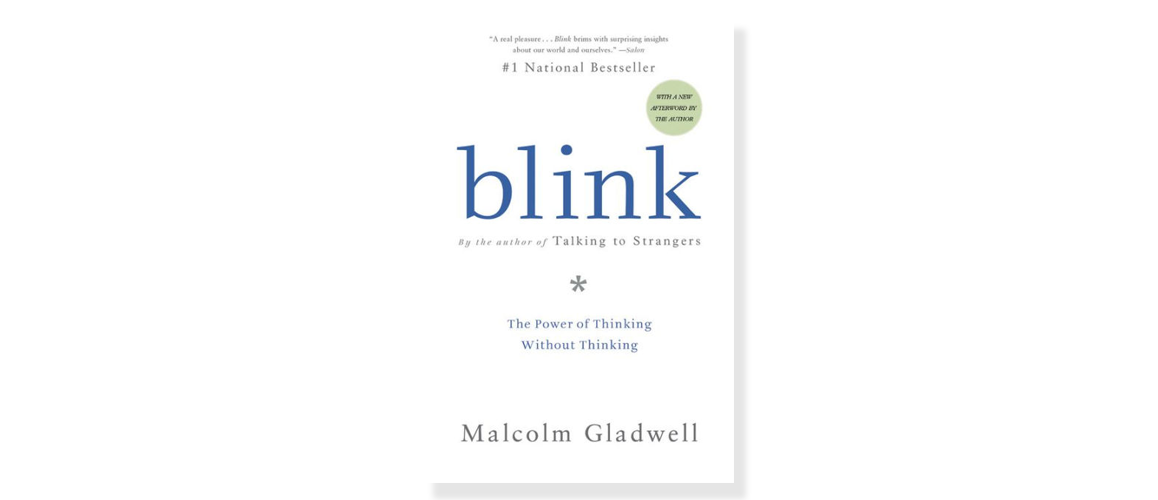
Blink
by Malcolm Gladwell
This books is based on making snap judgements and explains how our brain works when making decisions. It’s fascinating to learn what types of heuristics we use to make up our mind the blink of an eye (pun intended). What do fist impressions mean to the way we judge people and what techniques can — and do — we use when sizing up a new situation. It’s really well written and is an easy read.
Key Takeaways
🤔 Snap decision can sometimes (or often) be better than well-thought-through decisions. It’s the “gut feeling” often spoken about. When you make a snap judgment you don’t allow your brain to start doubting. This is useful, especially when you tend to overthink things. The more you ponder, the bigger the chances of doubting, which leads to not taking any actions or misjudging the situation.
🔪 Making quick decisions is called “thin-slicing”. It’s done by judging a book by its cover, making a decision based on first impressions. Sometimes it’s good to judge a book by its cover, also based on the takeaway above. Stereotypes and bias prevent us from thin-slicing, as we add more and more heuristics to the party, clouding snap decisions. It’s therefore good to make a habit of being open-minded and trying to eliminate bias (or at least become aware of your own biases), to open up to thin slicing.
👍 What we think we dislike or like, often isn’t based on truth. Actually, it’s often the opposite, which really raises the question of how well we know ourselves. We think we know ourselves and that we understand how our minds work, but again, the opposite is true. It’s good to be aware of this fact, again, helping you to keep an open mind.
Found this interesting?
Join a growing community of like-minded people. In the “The Human POV” newsletter I regularly share interesting insights, blogs, podcast and more on what it’s like being human in a digital age.

Blink
by Malcolm Gladwell
This books is based on making snap judgements and explains how our brain works when making decisions. It’s fascinating to learn what types of heuristics we use to make up our mind the blink of an eye (pun intended). What do fist impressions mean to the way we judge people and what techniques can — and do — we use when sizing up a new situation. It’s really well written and is an easy read.
Key Takeaways
🤔 Snap decision can sometimes (or often) be better than well-thought-through decisions. It’s the “gut feeling” often spoken about. When you make a snap judgment you don’t allow your brain to start doubting. This is useful, especially when you tend to overthink things. The more you ponder, the bigger the chances of doubting, which leads to not taking any actions or misjudging the situation.
🔪 Making quick decisions is called “thin-slicing”. It’s done by judging a book by its cover, making a decision based on first impressions. Sometimes it’s good to judge a book by its cover, also based on the takeaway above. Stereotypes and bias prevent us from thin-slicing, as we add more and more heuristics to the party, clouding snap decisions. It’s therefore good to make a habit of being open-minded and trying to eliminate bias (or at least become aware of your own biases), to open up to thin slicing.
👍 What we think we dislike or like, often isn’t based on truth. Actually, it’s often the opposite, which really raises the question of how well we know ourselves. We think we know ourselves and that we understand how our minds work, but again, the opposite is true. It’s good to be aware of this fact, again, helping you to keep an open mind.
Found this interesting?
Join a growing community of like-minded people. In the “The Human POV” newsletter I regularly share interesting insights, blogs, podcast and more on what it’s like being human in a digital age.